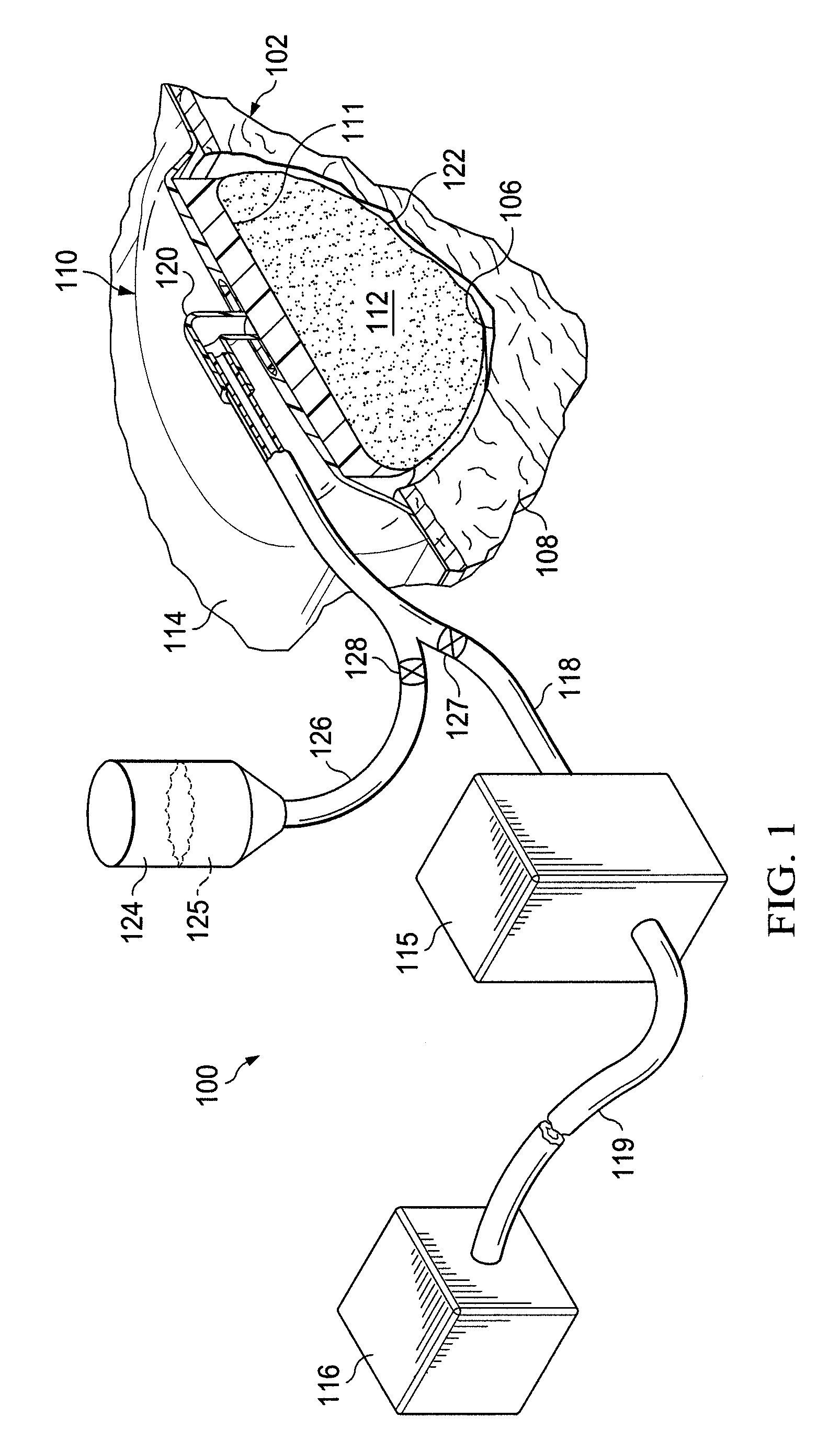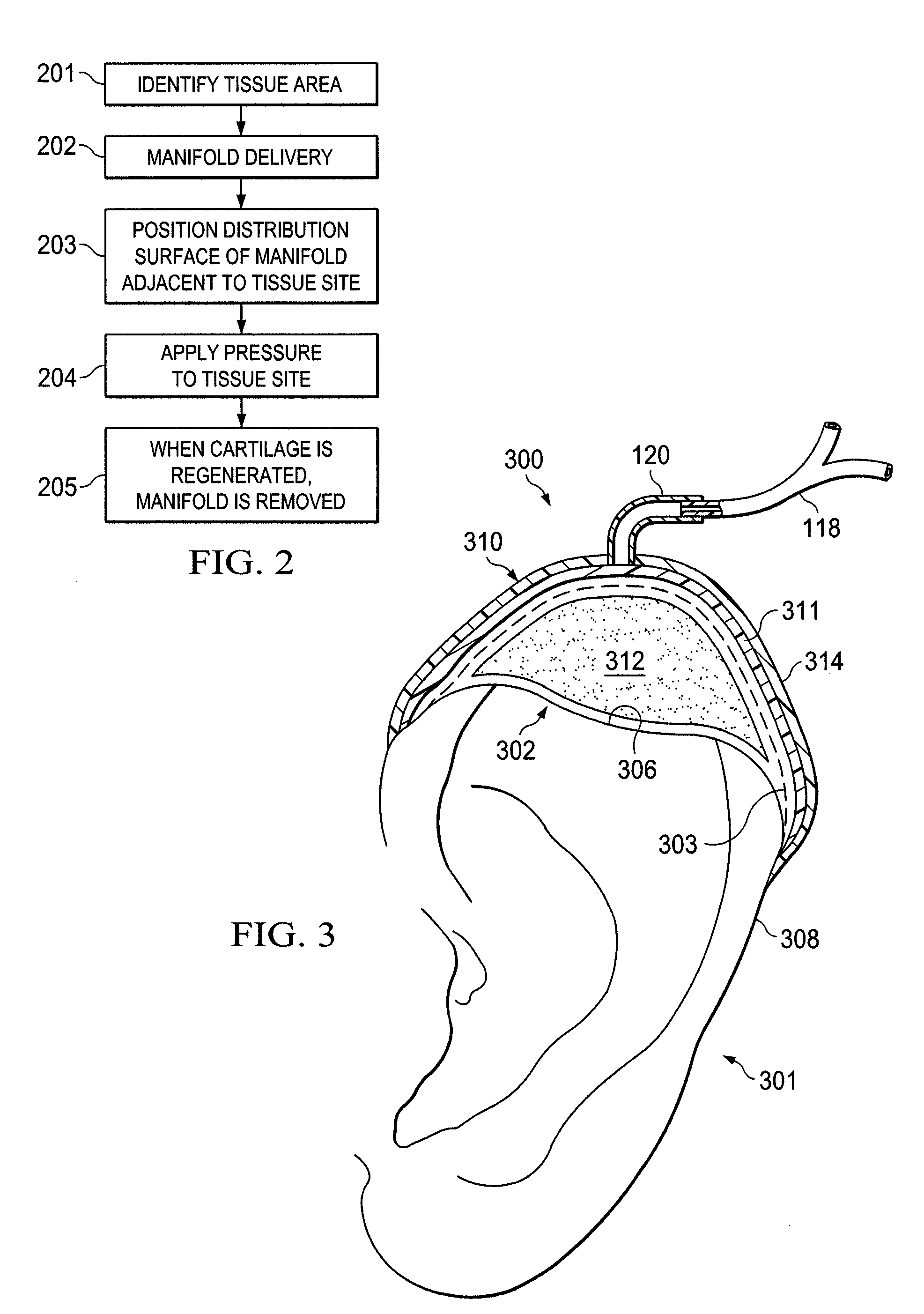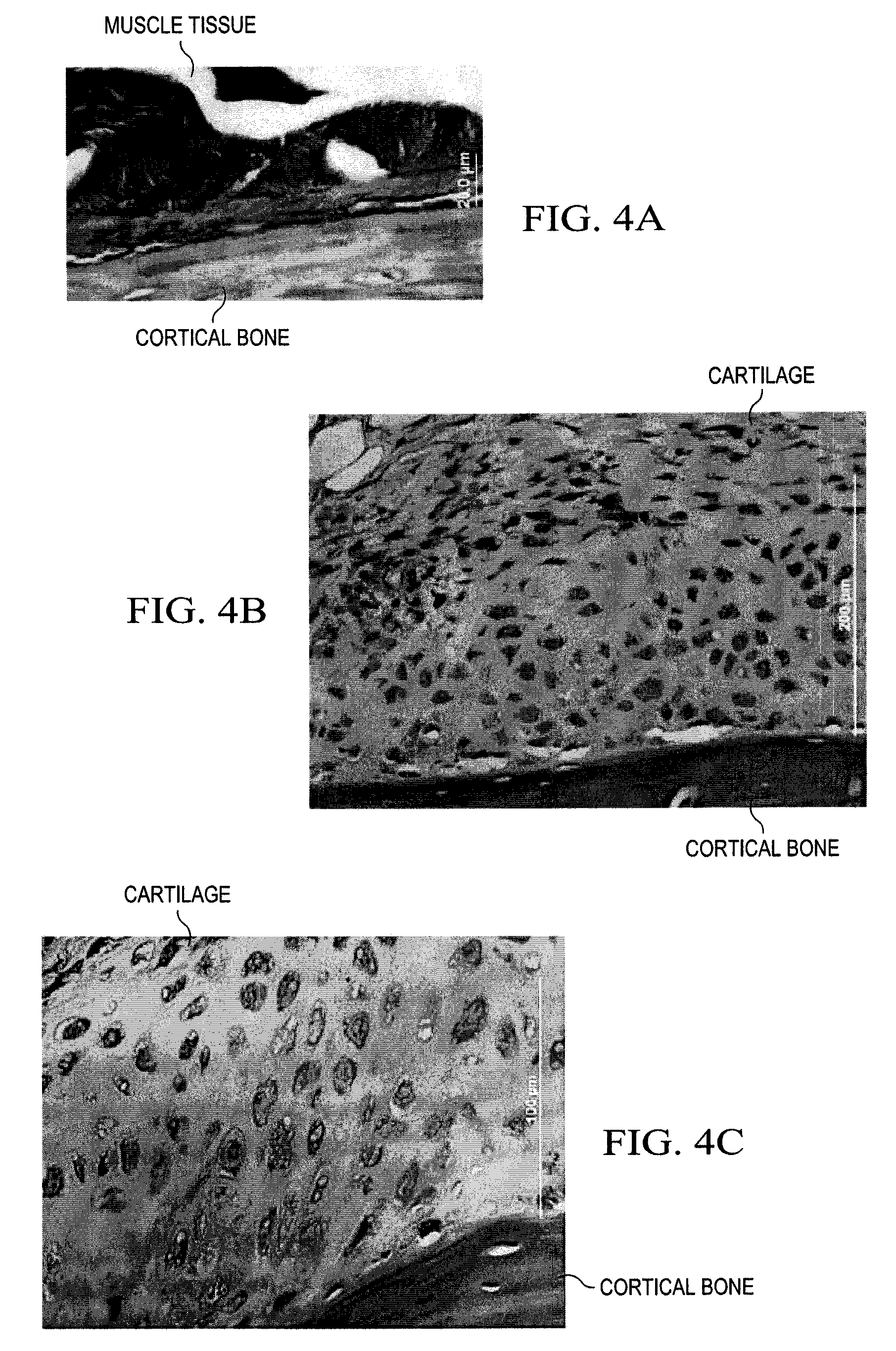Stimulation of cartilage formation using reduced pressure treatment
a technology of reduced pressure and stimulation of cartilage, which is applied in the field of tissue treatment systems, can solve the problems of not being used to promote cartilage regeneration, damage to cartilage, and affect millions of people throughout the world, and achieve the effect of stimulating cartilage growth
- Summary
- Abstract
- Description
- Claims
- Application Information
AI Technical Summary
Benefits of technology
Problems solved by technology
Method used
Image
Examples
example
Induction of Cartilage Tissue Formation
[0061]Cartilage formation was observed in response to the application of reduced pressure therapy to the surface of intact cranial periosteal membranes. These observations are of significance in that cartilage formation in response to a therapy is unique and of great interest in the field of tissue engineering. These formations were observed in the absence of scaffold materials and only with the application of reduced pressure. No cartilage formation was observed in controls not subjected to reduced pressure.
[0062]Cartilage degeneration caused by congenital abnormalities or disease and trauma is of great clinical consequence. Because of the lack of blood supply and subsequent wound-healing response, damage to cartilage generally results in an incomplete repair by the body. Full-thickness articular cartilage damage, or osteochondral lesions, allow for the normal inflammatory response, but result in inferior fibrocartilage formation. Surgical int...
PUM
 Login to View More
Login to View More Abstract
Description
Claims
Application Information
 Login to View More
Login to View More - R&D
- Intellectual Property
- Life Sciences
- Materials
- Tech Scout
- Unparalleled Data Quality
- Higher Quality Content
- 60% Fewer Hallucinations
Browse by: Latest US Patents, China's latest patents, Technical Efficacy Thesaurus, Application Domain, Technology Topic, Popular Technical Reports.
© 2025 PatSnap. All rights reserved.Legal|Privacy policy|Modern Slavery Act Transparency Statement|Sitemap|About US| Contact US: help@patsnap.com



